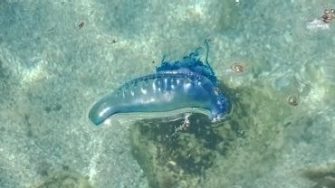
Synopsis
Many Australians have had a painful bluebottle sting when swimming at the beach, yet little is known what oceanographic conditions bring bluebottles to our shores.
The bluebottle (Physalia physalis) is a colonial cnidarian that floats on the ocean surface and is is transported by the ocean currents and the wind. The float (also known as the sail) comes in left and right-handed forms, with each form predicted to move in different directions relative to the wind. The different forms are easily observed on beach stranded individuals, but no data exist in Australia on the abundance of each form.
Observations from beachgoers on readily available digital platforms provide an outstanding opportunity to learn more about the distribution and timing of bluebottles on our shores. Data from citizen science programs can then be integrated into oceanographic models to better predict when bluebottles arrive on our shore and pose a risk to swimmers.
Aims
This honours project will:
- survey local beaches for stranded bluebottles
- analyse citizen science observations from a variety of sources (including iNaturalist, surf life saving records, and social media)
- assist in developing the strategy for obtaining further community engagement through the popular citizen science platform iNaturalist (Bluebottles in Australia project)
Student benefits
You’ll benefit through working with a supportive team of UNSW academics.
Through this project, you’ll learn how to:
- conduct field surveys for marine organisms
- apply critical thinking, statistical analysis and scientific writing
- research historical records
- develop community engagement and communication skills.
Supervisors: Prof. Alistair Poore (BEES), Dr Amandine Schaeffer (School of Mathematics and Statistics), Dr Jaz Lawes (Surf Life Saving Australia)
